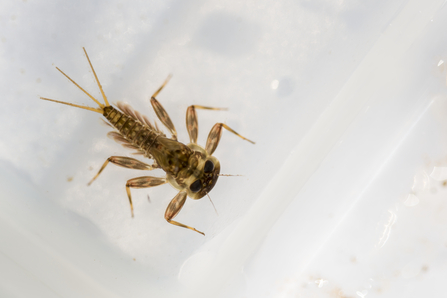Though relatively small and unassuming, the Test and Itchen headwaters - the uppermost tributaries of those famous rivers - are some of our county's most vibrant habitats. This is why they are the focus of the Watercress and Winterbournes scheme, in which the Trust is a lead partner. As part of the scheme, we monitor nine headwater sites through the SmartRivers initiative, which is co-ordinated by our scheme partner WildFish.
The SmartRivers methodology assesses water quality by measuring invertebrate populations. The larvae of mayflies, stoneflies, and caddisflies are particularly indicative, but beetles, molluscs, freshwater shrimp (Gammarus pulex), and other invertebrates are also counted. As different species are sensitive to different pollutants, their presence or absence can help us to identify issues in the area.
Samples are taken from each site twice a year, and preserved so that the invertebrates can be identified to species level. This makes SmartRivers a great complement to the Riverfly Monitoring Initiative (RMI or ARMI) methodology, which can be used monthly but groups the invertebrate species into broader categories. Our brilliant volunteers use both methods to assess the health of the headwaters.
The in-depth nature of SmartRivers monitoring means that it takes time to process and analyse the data. Our most recent results, for example, are from samples taken in the spring of 2023. They are nonetheless immensely valuable for spotting potential problems at the nine monitoring sites, which are:
- The Upper Anton (two sites)
- The Upper Test (two sites)
- The Bourne Rivulet (two sites)
- The Pillhill Brook (one site)
- The River Arle (one site)
- The Candover Brook (one site)



